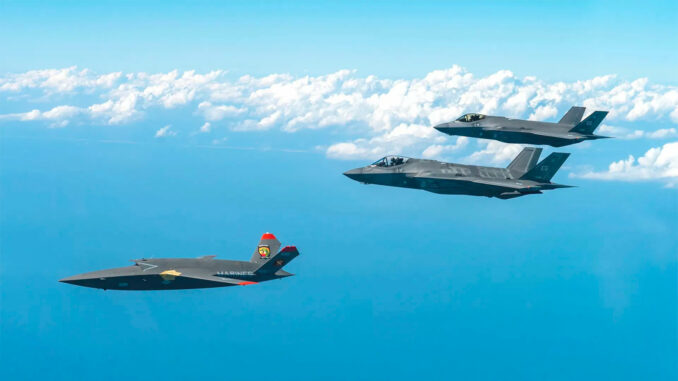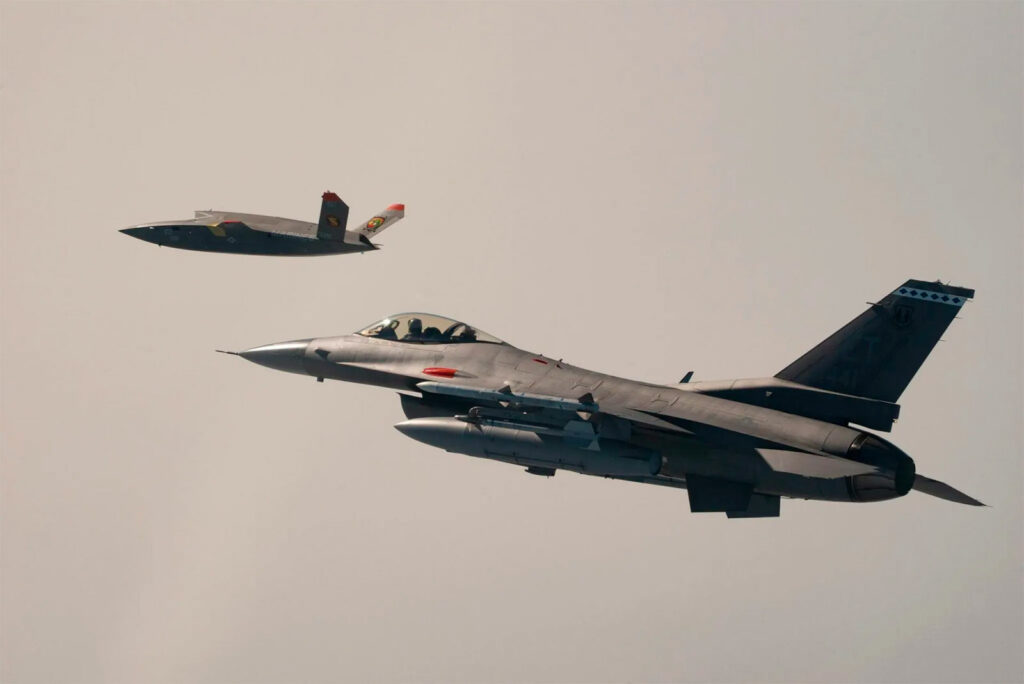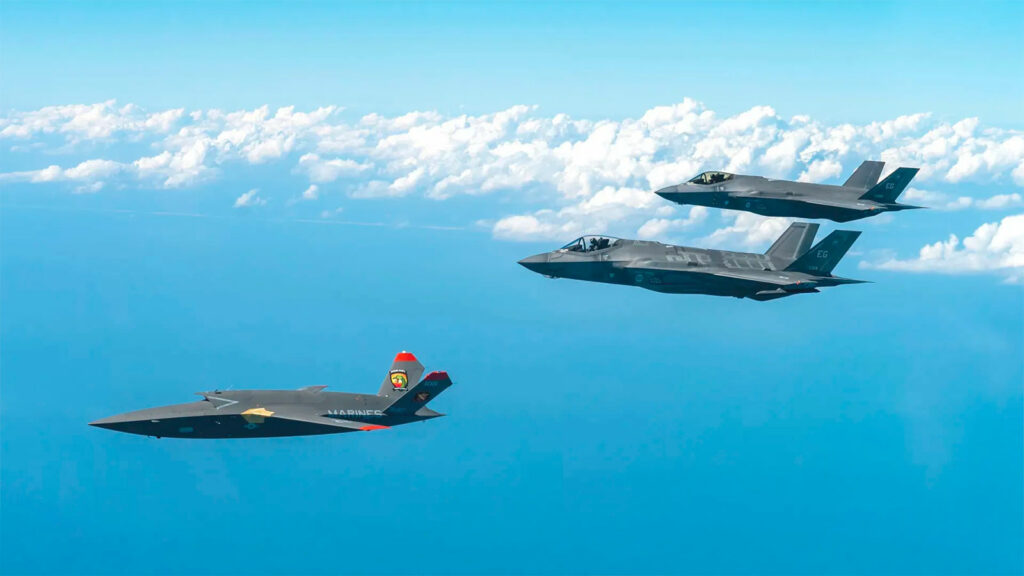
The US Marines are testing autonomous drones alongside F-35 fighter jets. Safety, AI, and coordination are key issues.
The challenge of coordinating autonomous drones and piloted aircraft
The integration of autonomous drones, known as Collaborative Combat Aircraft (CCA), into piloted air operations represents a strategic turning point for the US armed forces. However, ensuring the safe coexistence of these aircraft remains a major challenge.
Colonel Derek Brannon, director of the Marine Corps’ Cunningham Group, emphasizes that flying a drone such as the XQ-58A Valkyrie near an F-35 without risk of collision is an operational priority. This issue is at the heart of the Penetrating Affordable Autonomous Collaborative Killer-Portfolio (PAACK-P) program, which is exploring the electronic warfare capabilities of drones in collaboration with F-35 fighter jets.

The current limits of artificial intelligence in air combat
The US Air Force recently tested a modified F-16, the X-62A VISTA, piloted by artificial intelligence developed by Shield AI. During an exercise, this aircraft faced off against a human-piloted F-16. Although the AI demonstrated impressive capabilities, the two aircraft constantly exchanged data, highlighting the current limitations of autonomy in real combat situations.
Brandon Tseng, co-founder of Shield AI, claims that their system, Hivemind, allows a fleet of drones to learn collectively and adapt in real time. However, the lack of communication or GPS remains a major obstacle to overcome for complete autonomy.
Detection and avoidance systems: an operational necessity
To prevent collisions, the Marines are integrating detection and avoidance systems (DAAS) on their MQ-9 Reaper drones. These systems, which include radars and sensors, are designed to identify and avoid obstacles in flight. However, their effectiveness has mainly been proven in controlled airspace, and their performance in combat environments has yet to be validated.
Toward greater autonomy for drones in complex missions
The long-term goal is to enable drones to carry out missions autonomously, in coordination with piloted aircraft. Colonel Brannon envisages scenarios where drones accompany units in hostile areas without relying exclusively on piloted tactical aviation. This requires significant advances in autonomy, communication, and real-time decision-making.
The MUX program: an evolution of Marine capabilities
The Marine Air-Ground Task Force Unmanned Aircraft System Expeditionary (MUX) program aims to develop a new generation of drones to replace or supplement the MQ-9 Reaper. The Marines are exploring different configurations, ranging from medium-altitude drones to more compact aircraft capable of performing various missions, such as reconnaissance, electronic warfare, and logistical support.
Companies such as General Atomics and Anduril are participating in this development, with prototypes such as the YQ-42A and YFQ-44A, which could meet the specific needs of the Marines.

Joint collaboration for a unified strategy
Coordination between the different branches of the armed forces is essential for the success of UCA. The Navy, Air Force, and Marine Corps are working together to develop common doctrines, tactics, and procedures. Each branch focuses on specific aspects: the Air Force on the development of aerial vehicles and autonomy, the Marines on integration with platforms such as the F-35B, and the Navy on the introduction of drones such as the MQ-25 into the fleet.
A gradual but complex transformation
The integration of autonomous drones into air operations represents a major step forward, but it comes with technical and operational challenges. Ensuring safe coordination between drones and piloted aircraft, developing effective avoidance systems, and achieving true autonomy are all objectives that must be met. Joint collaboration and partnerships with technology companies will be key to overcoming these challenges and transforming military capabilities in a sustainable way.
War Wings Daily is an independant magazine.